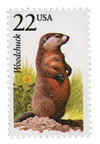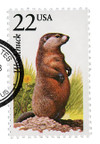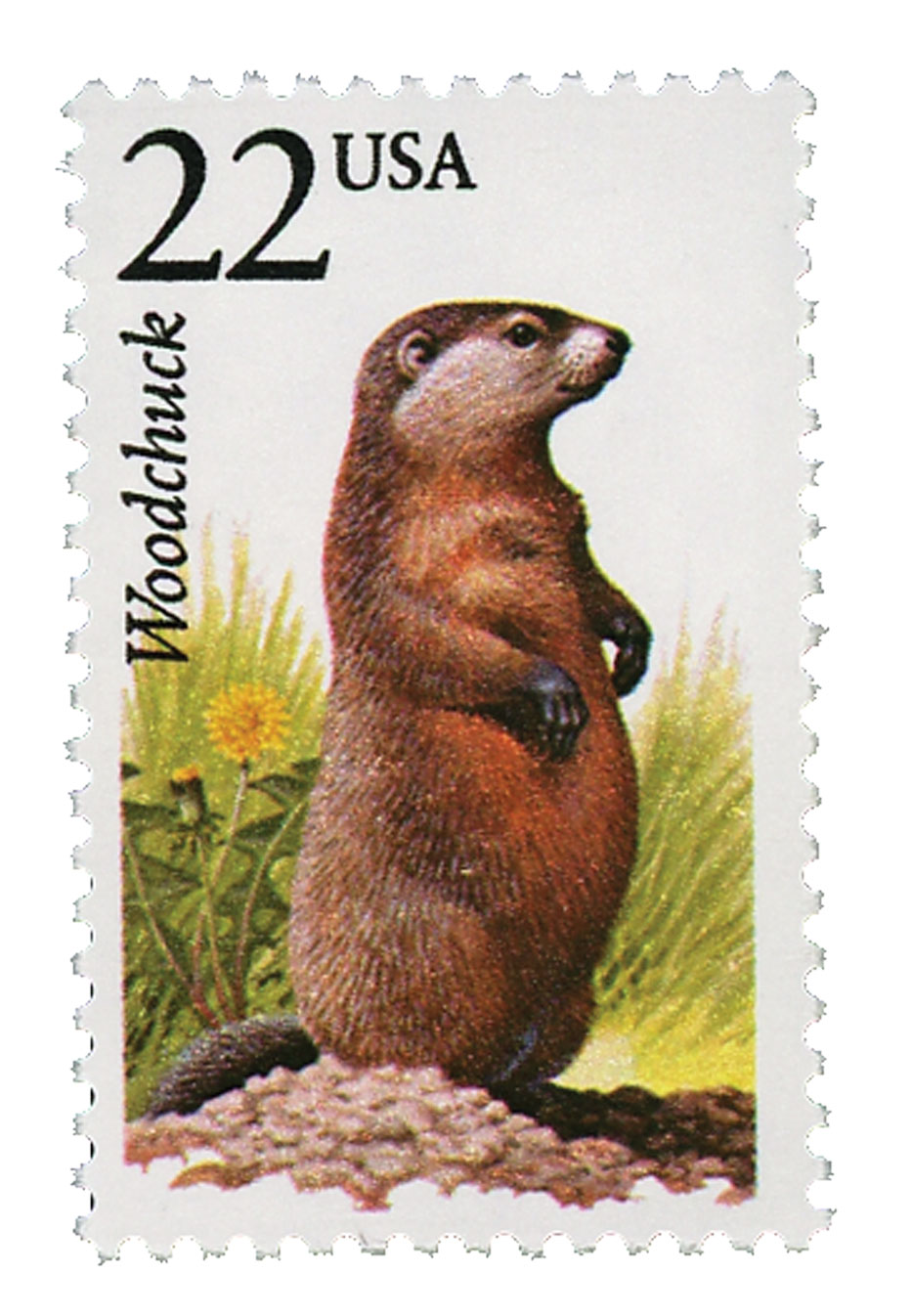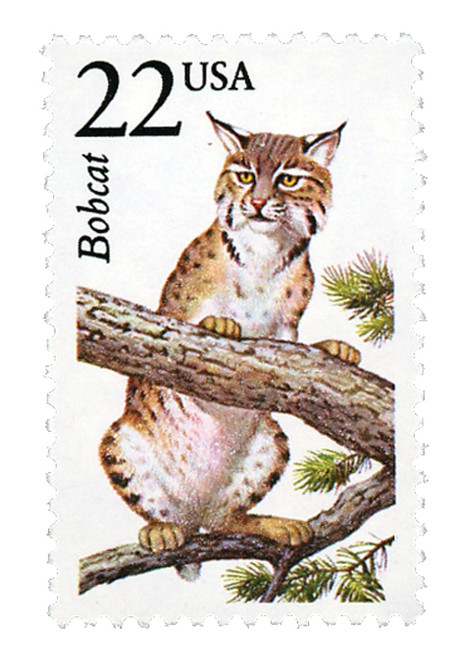
# 2307 - 1987 22c North American Wildlife: Woodchuck
1987 22¢ Woodchuck
North American Wildlife
City: Toronto, Canada
Quantity: 12,919,500
Printed By: Bureau of Engraving and Printing
Printing Method: Photogravure
Perforations: 11
Color: Multicolored
Happy Groundhog Day!
However, the tradition dates back much farther to the Christian holiday known as Candlemas Day. Historically, on February 2, members of the clergy would bless and pass out candles for the winter. These candles represented how long and cold winter would be.
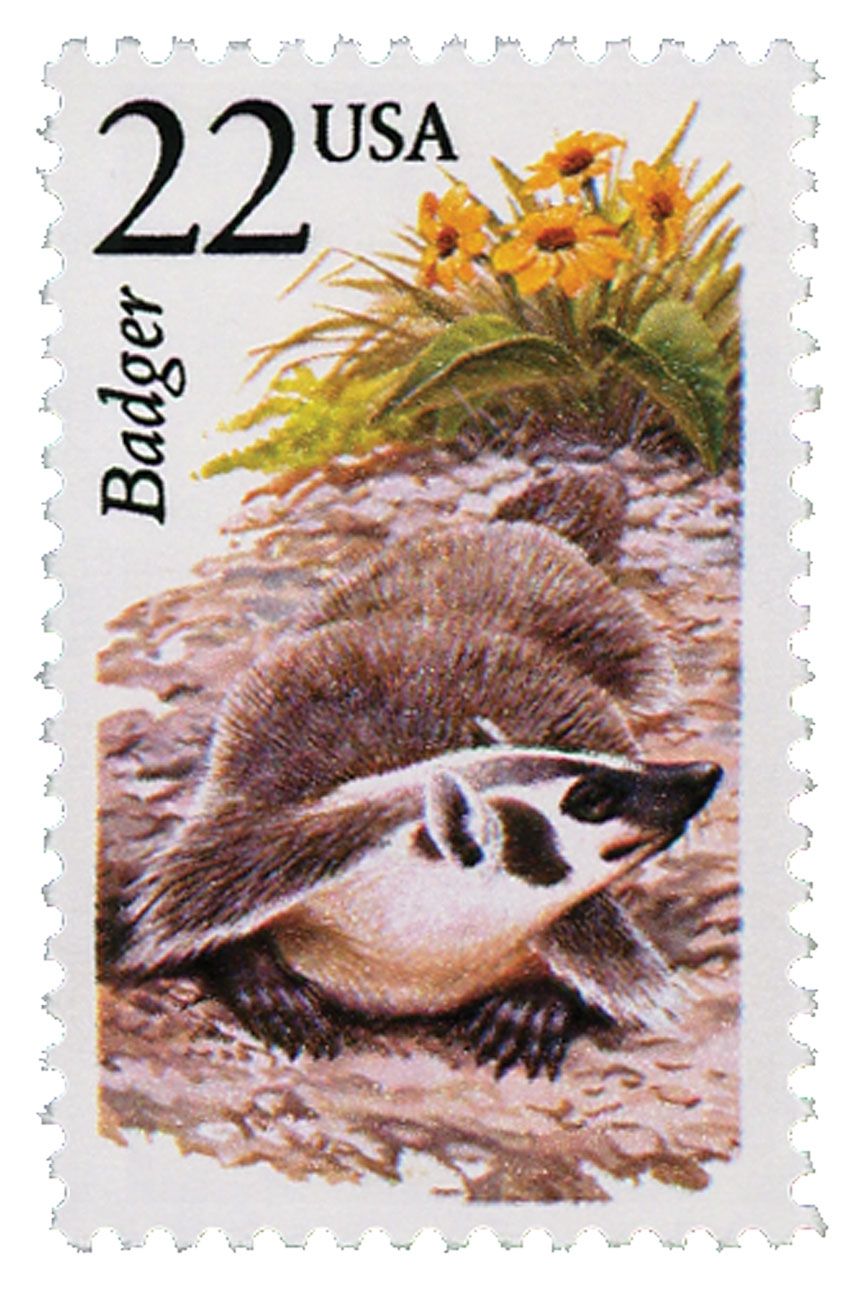
In Germany, Candlemas Day was expanded to include an animal – the badger – to predict the weather and was also known as Badger Day. The German lore stated, “If the badger sunbathes during Candlemas-week, for four more weeks he will be back in his hole.” In different areas, other animals were used for the same purpose, including bears and foxes.
Dutch and German settlers brought this tradition to America, where the badger was replaced by the more common groundhog (also known as the woodchuck). The first written record of Groundhog Day in America was on February 2, 1840, in the diary of James L. Morris of Morgantown, Pennsylvania.
However, the 1887 celebration is often considered the first official Groundhog Day in America. On February 2 of that year, a group of citizens went to the Gobbler’s Knob part of town to observe the groundhog for the first time. Local newspaper editor Clymer Freas is often considered the father of “Groundhog Day” and many believe Groundhog Day events in America began in Punxsutawney.
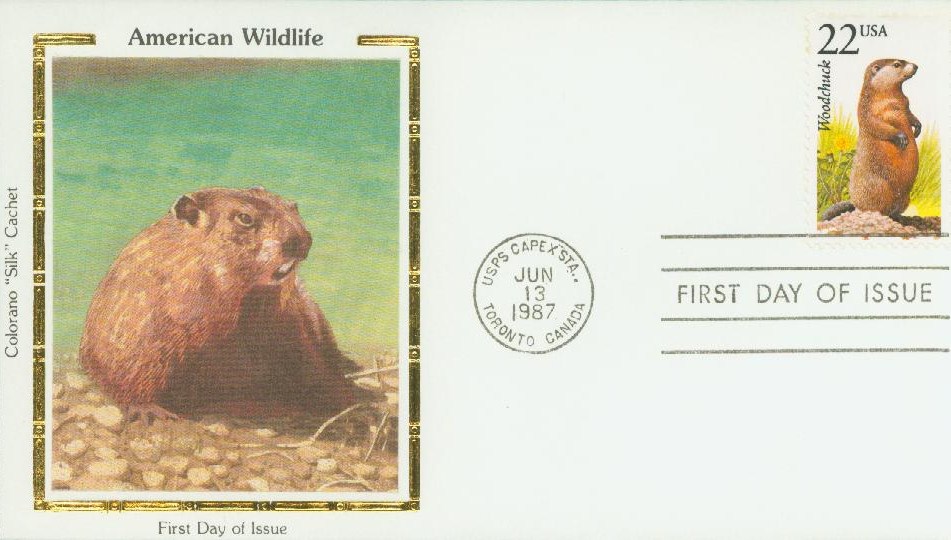
Reportedly, the first groundhog was named Phil, and the group that held the event in Punxsutawney claimed he was the only true weather-forecasting groundhog. In spite of this, several other towns have their own celebrations and their own groundhogs, including Birmingham Bill, Staten Island Chuck, and Canada’s Shubenacadie Sam.
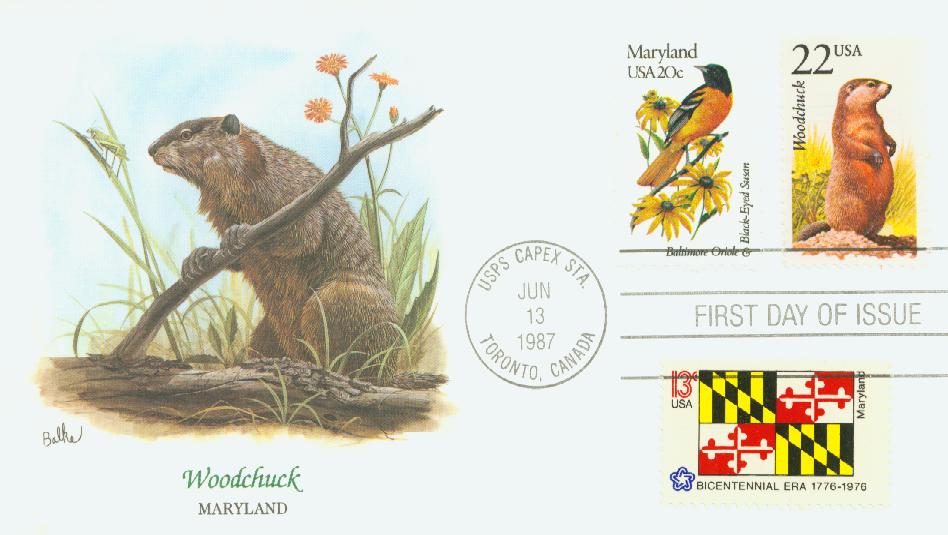
The Punxsutawney celebration is generally the largest, hosting as many as 40,000 people every year. As far as Phil’s accuracy, that’s up for debate. Over the years Punxsutawney groundhogs have predicted 103 extended winters and 17 early springs. One source claims he was accurate just 39% of the time. According to the Farmer’s Almanac, they’ve been accurate 50% of the time, while a team at Middlebury College states his long-term predictions were 70% accurate when measuring temperature highs and lows.
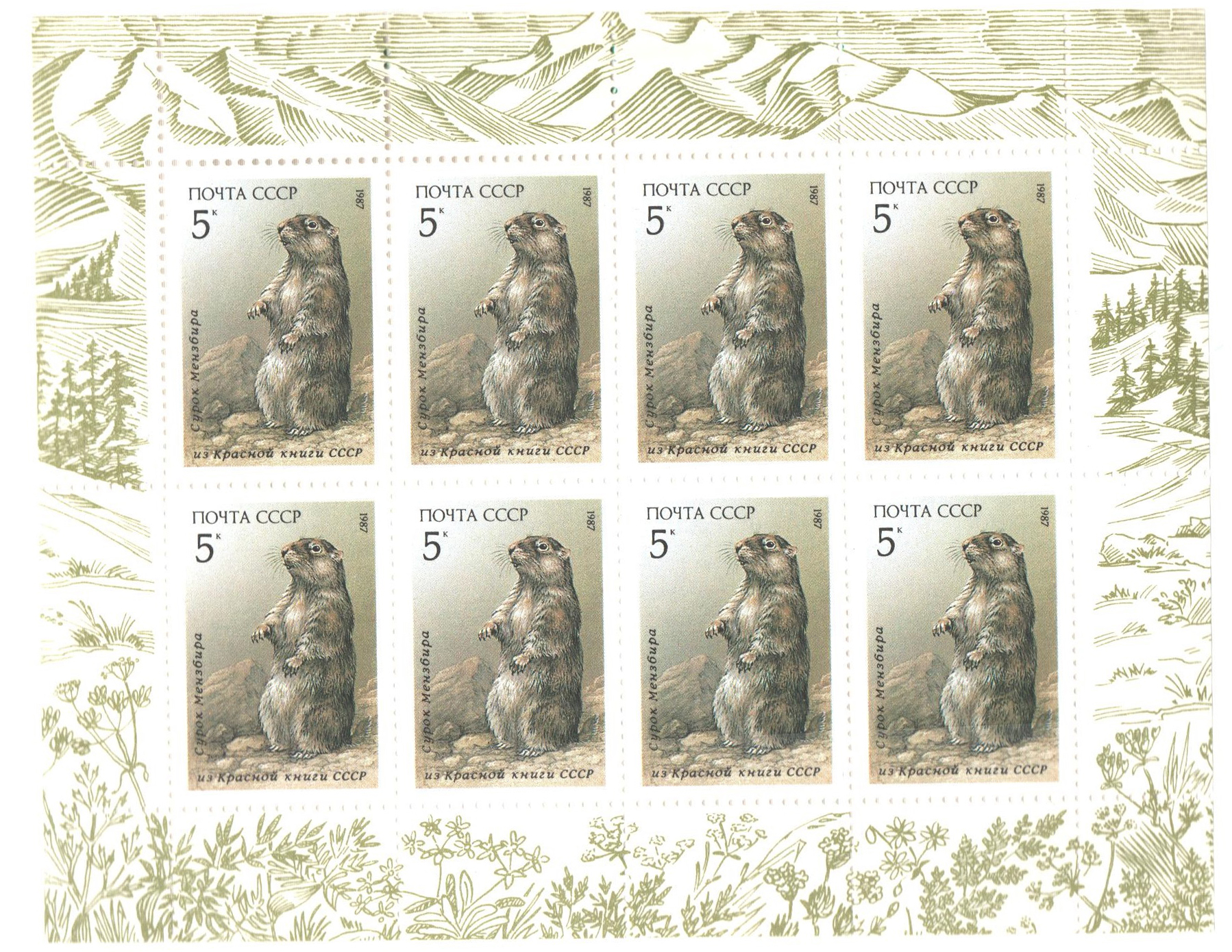
Click here to visit the Punxsutawney Groundhog Day website.
1987 22¢ Woodchuck
North American Wildlife
City: Toronto, Canada
Quantity: 12,919,500
Printed By: Bureau of Engraving and Printing
Printing Method: Photogravure
Perforations: 11
Color: Multicolored
Happy Groundhog Day!
However, the tradition dates back much farther to the Christian holiday known as Candlemas Day. Historically, on February 2, members of the clergy would bless and pass out candles for the winter. These candles represented how long and cold winter would be.

In Germany, Candlemas Day was expanded to include an animal – the badger – to predict the weather and was also known as Badger Day. The German lore stated, “If the badger sunbathes during Candlemas-week, for four more weeks he will be back in his hole.” In different areas, other animals were used for the same purpose, including bears and foxes.
Dutch and German settlers brought this tradition to America, where the badger was replaced by the more common groundhog (also known as the woodchuck). The first written record of Groundhog Day in America was on February 2, 1840, in the diary of James L. Morris of Morgantown, Pennsylvania.
However, the 1887 celebration is often considered the first official Groundhog Day in America. On February 2 of that year, a group of citizens went to the Gobbler’s Knob part of town to observe the groundhog for the first time. Local newspaper editor Clymer Freas is often considered the father of “Groundhog Day” and many believe Groundhog Day events in America began in Punxsutawney.

Reportedly, the first groundhog was named Phil, and the group that held the event in Punxsutawney claimed he was the only true weather-forecasting groundhog. In spite of this, several other towns have their own celebrations and their own groundhogs, including Birmingham Bill, Staten Island Chuck, and Canada’s Shubenacadie Sam.

The Punxsutawney celebration is generally the largest, hosting as many as 40,000 people every year. As far as Phil’s accuracy, that’s up for debate. Over the years Punxsutawney groundhogs have predicted 103 extended winters and 17 early springs. One source claims he was accurate just 39% of the time. According to the Farmer’s Almanac, they’ve been accurate 50% of the time, while a team at Middlebury College states his long-term predictions were 70% accurate when measuring temperature highs and lows.

Click here to visit the Punxsutawney Groundhog Day website.






